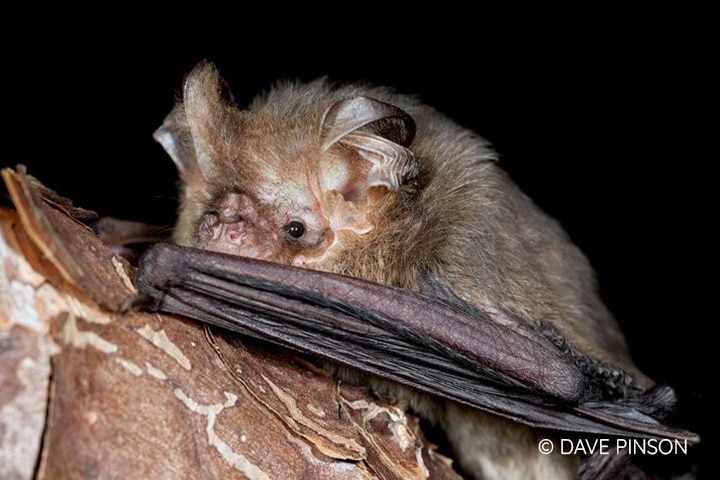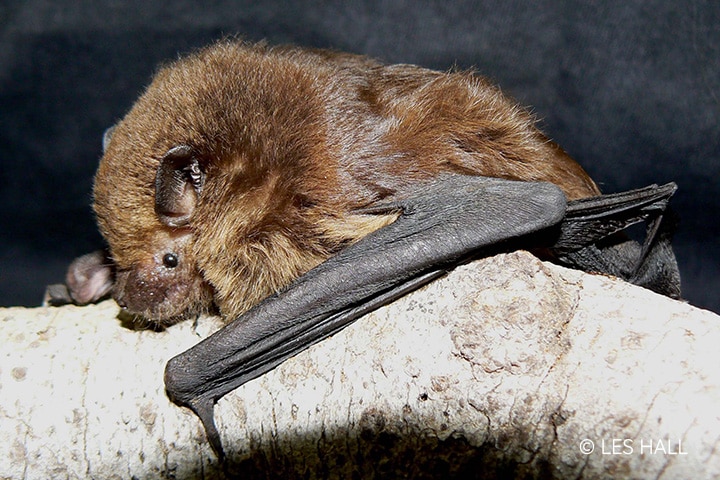Microbats
Microbats are small, mainly insectivorous bats which navigate and feed using echolocation. In Australia we have approximately 68 species of microbats, 35 of which are classified as threatened species.

Gould’s Long-eared Bat
(Nyctophilus gouldi)

Greater Broad-nosed Bat
(Scoteanax rueppellii)

Northern Free-tailed Bat
(Mormopterus lumsdenae)
Worldwide, bat numbers are declining drastically due to human activity and habitat destruction. It is estimated that millions of bats are killed every year by wind turbines. The blade tips can reach speeds of up to 288km per hour (180mph). However it is the change in air pressure, known as ‘barotrauma’, which is most deadly. This phenomenon causes the small blood vessels in the lungs of bats to explode, killing them instantly.
Reasons for population decline in Australia include:
- habitat destruction
- bush fires
- pesticides
- predators
- competition for roosting hollows
- disturbances (including intentional) at caves and other sites
- persecution driven by fear and ignorance of bats.

Microbats live in a range of habitats with roost selection and preference almost as varied as the microbat diversity.
Whilst providing important protection from wind, rain and predators, roosts located in close proximity to foraging sites are also beneficial for mating, maternal care and social cohesion.
Bat roosts can be nightly opportunistic or deeply traditional. With the extensive loss of habitat such roosts now include man-made structures such as mines or tunnels for cave dwelling species. Roof and building cavities attract tree hollow and crevice species, while foliage and bark dwelling species can be found in pool umbrellas and hanging jackets.
There are many reasons why and how bats enter human structures. Some bats can get confused while foraging or migrating. In addition, man-made structures such as homes often provide safe environments with stable temperatures, especially in areas where they have lost natural habitat.
REPRODUCTION
Gestation timeframes are difficult to determine with variability between and within species. Typically, gestation is between 40-50 days for a smaller microbat, to 5-6 months for the larger microbats. The weight of pups at birth is on average 22% of the adult weight of the mother.
Birthing of microbats is usually performed in a head-up or cradle position where the tail and wing membranes are used to cradle the pup.
Temperate or sub-tropical bats typically give birth to single young or twins once a year. Provided they survive their difficult first year, microbats can live to between seven and 40 years depending on the species.
The young are born furless with eyes closed, dependent on their mothers for milk and warmth. When babies become too heavy to be carried, they are left behind in the maternity colony. These colonies can consist of a small number of animals, or even several thousand. By 6-8 weeks the young are fully developed and able to fly and feed themselves. Some microbat species can store viable sperm for many months, and others can hold their pregnancy in limbo for months as well.
DIET
Most microbats are insectivorous, feeding on lawn grub moths, weevils, caterpillars, midges, flying termites, mosquitoes and other insects. They can each eat as much as 40% of their own bodyweight in a single night (or several hundred insects per hour).
Some species catch insects in their mouths, while others use their tail membrane as a catching basket and then consume their prey – all while still in flight. The Ghost Bat (Macroderma gigas), while no longer classified as a microbat, is a small carnivorous bat which preys on rodents, frogs, birds and other bats. The Large-footed Myotis (aka the fishing bat) has very long toes which it uses to catch small fish and aquatic invertebrates from the surface of water bodies.
Echolocation
Contrary to the myth, microbats are not blind. However they navigate and feed using echolocation. This is a highly sophisticated method microbats use to generate information about their surroundings. It is achieved by emitting high frequency sound waves through their mouth and nostrils and listening for the echo bouncing back from surrounding objects. These can be solid objects they are navigating around, or tiny fruit flies they are hunting to eat. The echoes bouncing back can tell the microbat the distance from their prey, the size, shape and even the speed the prey is travelling. The sound waves are beyond human hearing range.
There can be very elaborate facial features on microbats such as noseleafs which direct echolocation calls. It is truly an amazing feature and is the subject of a great deal of study.
Different species have different frequency calls, thus specialised equipment known as bat detectors have been designed to record these calls and identify species.
